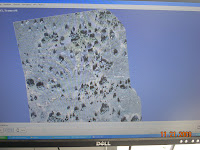I have discussed several top conferences related to my research. Now moving on to top symposiums. These symposiums are like workshops where new ideas are presented and discussed to get a reality check from the fellow researchers and also to brainstorm. However, they normally last for several days and give the participants plenty of time to collaborate and discuss things.
Top Symposiums
==================================================================
RO-MAN -- IEEE International Symposium on Robots and Human Interactive Communications
RO-MAN workshop/symposium addresses fundamental issues of co-existence of human and intelligent machines such as robots and recent advancements of technological as well as psychological researches on every aspect of interactive communication and collaboration between robots and humans. Originally founded by several Japaneses researchers in 1992, the symposium has grown to attract much attention from researchers around the world. For example, the last RO-MAN included papers from 17 different countries. Solicited subjects cover a wide range including (but not limited to) ones such as socially interactive robots, entertainment robots, human assisting robots, human training robots, education robots, and robotic arts.
The RO-MAN symposium/workshop is a two-track event held annually, therefore, relatively small, holding about 70 to 280 participants. Papers accepted are mostly six pages long. I have never attended the RO-MAN symposium, and I couldn't find any information on the acceptance rate of the workshop. I would guess the acceptance rate is much lower compared to the top conferences I had blogged about before
Since the last RO-MAN symposium just happened last month, the location for the next RO-MAN symposium Ro-Man 2012 (the 21th) is still unknown at this point.
Conference Dates: July 31-August 3, 2012 (roughly)
Submission Deadline: March 1, 2012 (roughly)
AAAI Spring/Fall Symposium Series
The AAAI Spring/Fall Symposia are great places to meet peer researchers in a more intimate setting and a relaxed atmosphere to share ideas and learn from each other's artificial intelligence research. The topics might change each year depending on symposium proposals received. Multiple symposiums of various topics will be held simultaneously and participants are expected to attend a single symposium throughout the symposium series. Besides the selected participants by the program committee (authors of accepted papers), only a limited number of people are allowed to register in each symposium on a first-come, first served basis, due to limited seats (the Symposium series are actually quite popular).
The Fall Symposium series is usually held on the east coast at Arlington, Virginia during late October or early November.
Each symposium will have a distinct research interest. For example, the AAAI 2011 Fall Symposia have the following seven topics:
- Advances in Cognitive Systems
- Building Representations of Common Ground with Intelligent Agents
- Complex Adaptive Systems: Energy, Information and Intelligence
- Multiagent Coordination under Uncertainty
- Open Government Knowledge: AI Opportunities and Challenges
- Question Generation
- Robot-Human Teamwork in Dynamic Adverse Environment
The next AAAI Fall Symposia AAAI 2011 Fall Symposia will be held at Arlington, Virginia, USA.
Symposia Dates: November 4-6, 2011
Submission Deadline: May 20, 2011
The next AAAI Fall Symposia you can submit a paper to is AAAI 2012 Fall Symposia
Symposia Dates: November 4-6, 2012 (Roughly)
Submission Deadline: May 20, 2012 (Roughly)
The Spring Symposium series is typically held during spring break (generally in March) on the west coast at Stanford. This one is actually my preferred one because Stanford University is not that far away from Utah, and I also lived in the neighborhood for three months.
The next AAAI Spring Symposia include the following six topics:
- AI, The Fundamental Social Aggregation Challenge, and the Autonomy of Hybrid Agent Groups
- Designing Intelligent Robots: Reintegrating AI
- Game Theory for Security, Sustainability and Health
- Intelligent Web Services Meet Social Computing
- Self-Tracking and Collective Intelligence for Personal Wellness
- Wisdom of the Crowd
The next AAAI Spring Symposium AAAI 2012 Spring Symposia will be held at Stanford University, Palo Alto,California, USA.
Symposium Dates: March 26-28, 2012
Submission Deadline: October 7, 2011
A good friend of mine, Janet, passed away this morning because of Acute Leukemia. Wish her peace in heaven! Lessons learned: Complete all those projects you want to do before a doctor tells you that you only have 5 days to live. Let's see, I need to finish my PhD, finish translating SPW, finish building a robot, and make up all the blog posts. Man! I better get working!














































































































































































